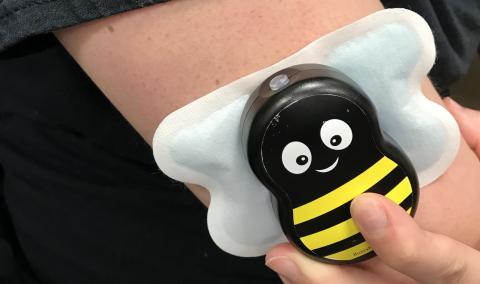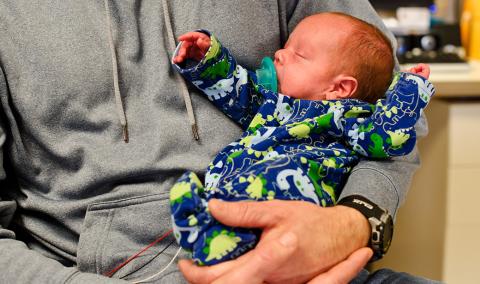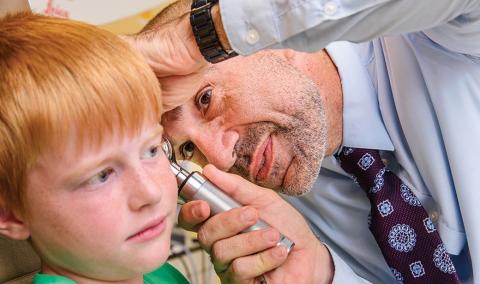Phimosis and paraphimosis are conditions that can occur during childhood in uncircumcised boys.
Phimosis is when the foreskin cannot be retracted, and paraphimosis occurs when the foreskin becomes stuck in a retracted position and cannot return to its original position.
What causes phimosis and paraphimosis?
It is normal for the foreskin to not retract during a child’s first few years of life. Often, over time, it will retract on its own. But if it does not, your child will be diagnosed with phimosis — a condition that can cause pain, swelling and urinary issues.
It is common for parents to wonder if they should try to retract their child’s foreskin. MU Health Care’s pediatric urology team advises against this. Doing so can hurt your child and result in paraphimosis, a condition that can damage the head of the penis if not addressed in a timely fashion.
Both phimosis and paraphimosis can be treated through circumcision, a minor surgical procedure in which the foreskin is removed.
Circumcision: what to expect
If your child is older than 6 weeks old, his circumcision will occur in an operating room while he is under anesthesia. Most children go home the same day, but some will need to stay overnight for monitoring.
After the procedure, you can expect to see a small amount of blood in your child’s diaper for a few days. If you notice severe bleeding (a constant drip off of the penis), get in touch with your doctor right away.
Your child will have stitches near the head of his penis that will dissolve on their own over time. His penis will likely be swollen and bruised after surgery, and it could take a few weeks for these symptoms to subside.
Your doctor will prescribe pain medications and ointments after the procedure— be sure to closely follow the instructions you receive. We will schedule a follow-up visit to our clinic 3 to 6 weeks after the surgery.
Related Conditions & Treatments
- Adolescent Medicine
- Pediatric Chest Wall Disorders Program
- Down Syndrome
- Emergency Care for Kids
- Feeding Tubes for Children
- Hyperbaric Oxygen Therapy
- Juvenile Diabetes
- Neonatology
- Pediatric Anesthesiology
- Pediatric Cancer
- Pectus Carinatum
- Pectus Excavatum
- Pediatric Cardiology
- Pediatric Dermatology
- Pediatric Development and Behavior
- Pediatric ENT (Ear, Nose and Throat)
- Pediatric Epilepsy
- Pediatric Eye Care
- Pediatric Gastroenterology
- Pediatric Infectious Diseases
- Pediatric Inpatient Rehabilitation
- Pediatric Nephrology
- Pediatric Neurology
- Pediatric Neurosurgery
- Pediatric Orthopaedics
- Pediatric Plastic Surgery
- Pediatric Primary Care
- Pediatric Psychiatry
- Pediatric Pulmonary Medicine
- Pediatric Sleep Medicine
- Pediatric Surgery Services
- Pediatric Surgical Services
- Pediatric Urology
- Pediatric Vascular Anomalies
- Pediatric Weight Management
- Sickle Cell Disease
- Aerodigestive Program



























